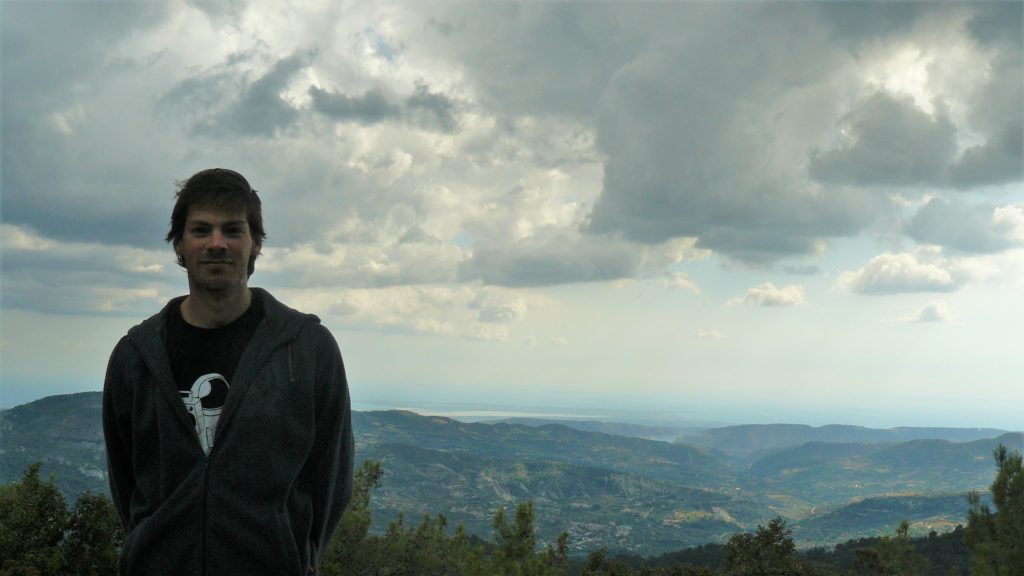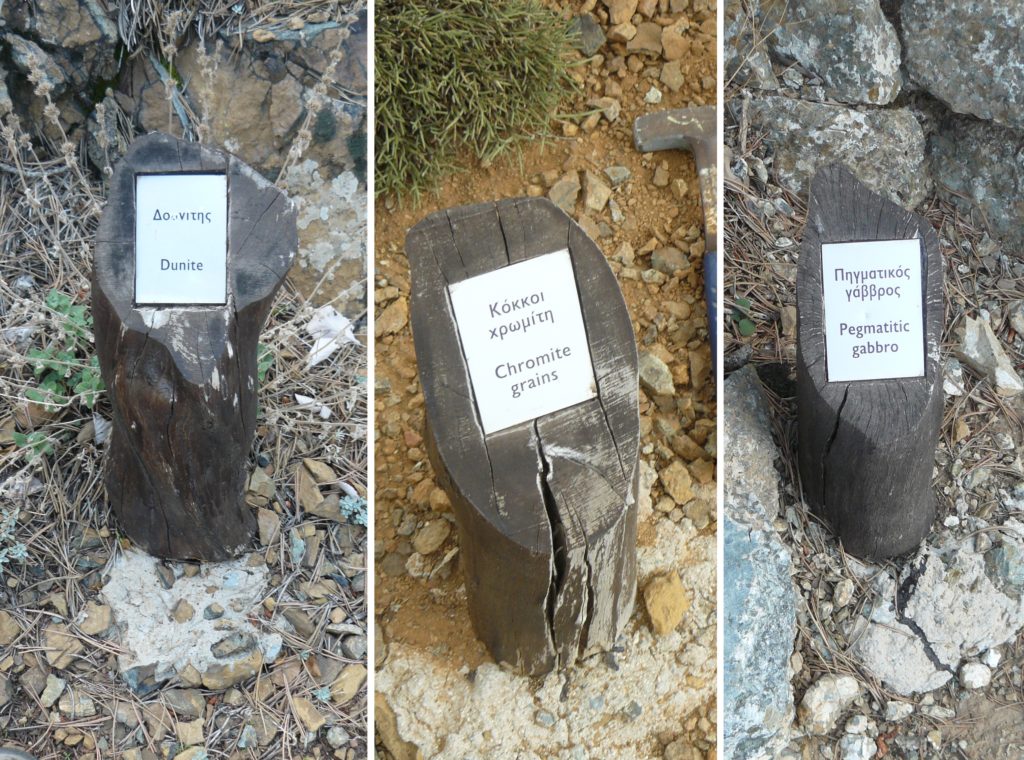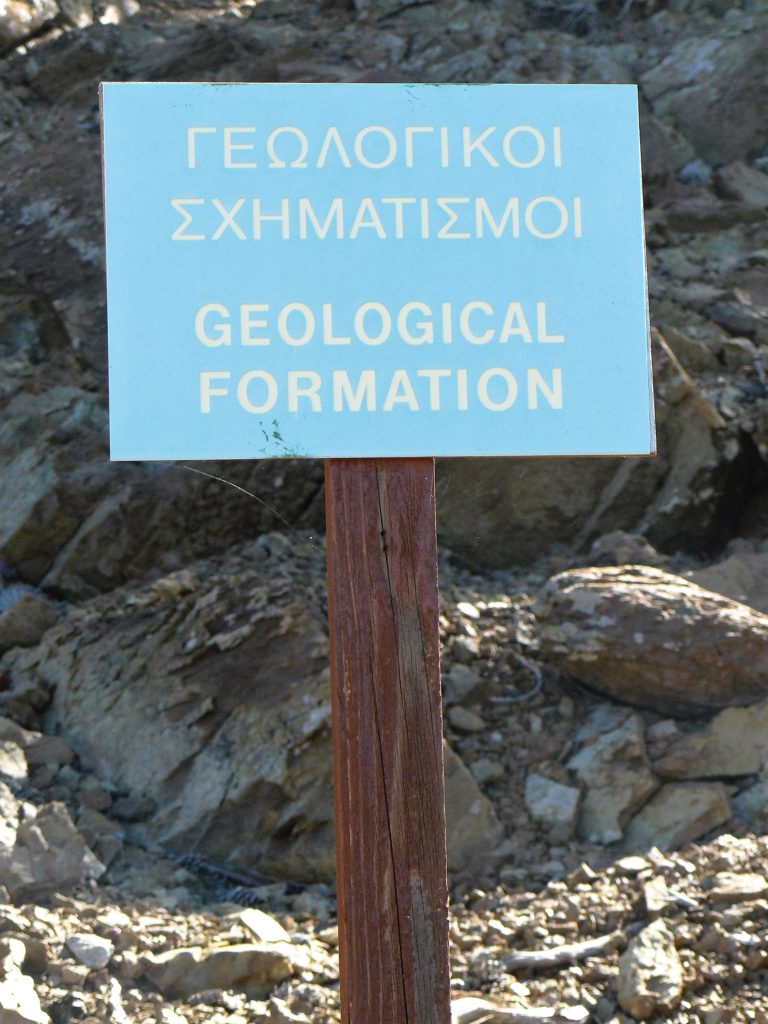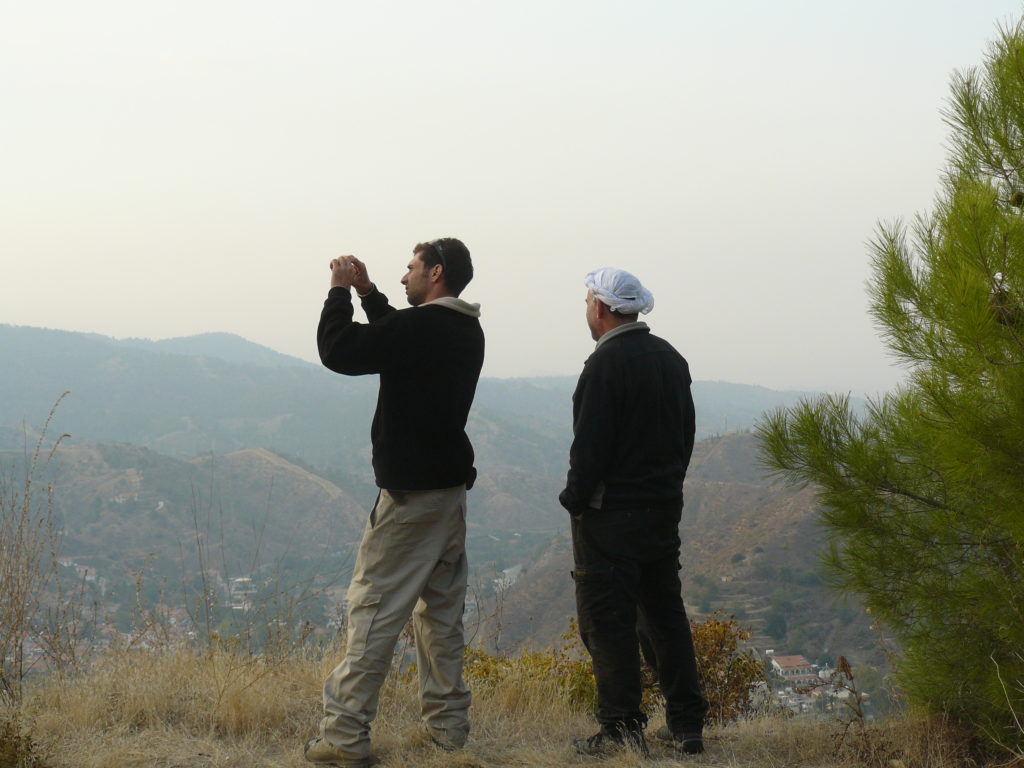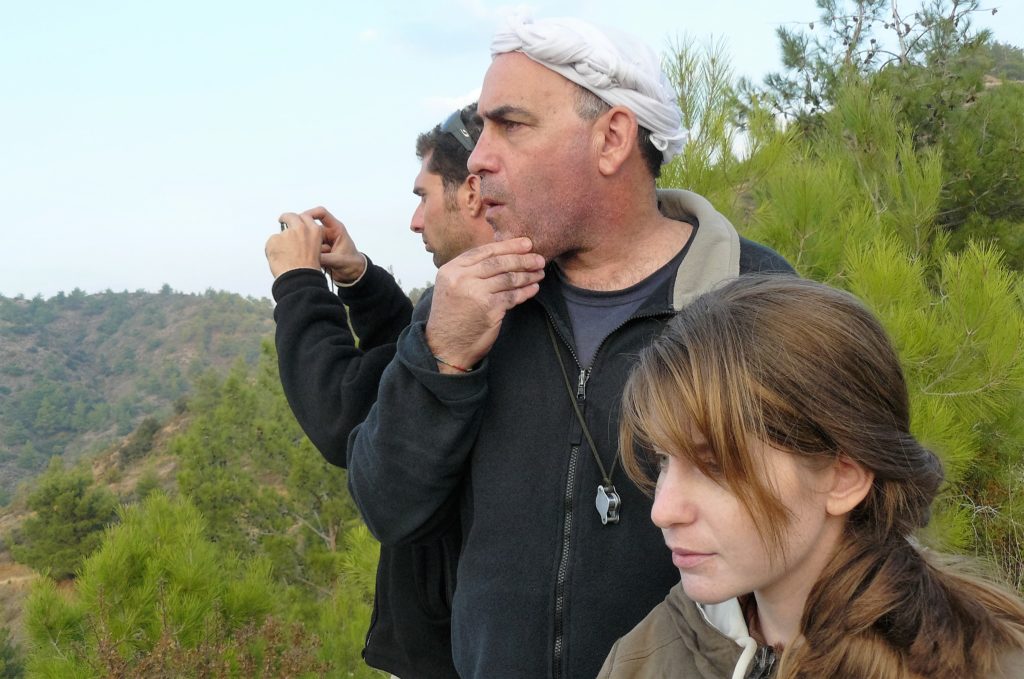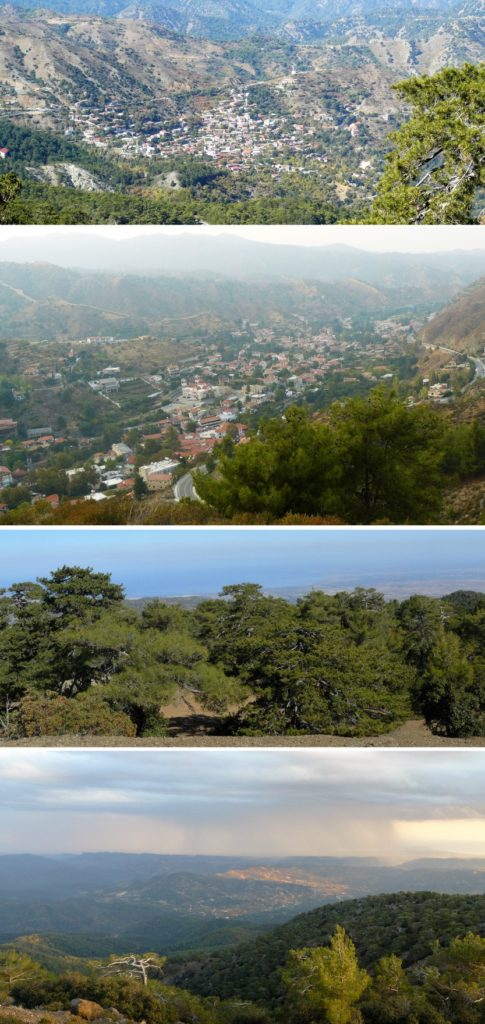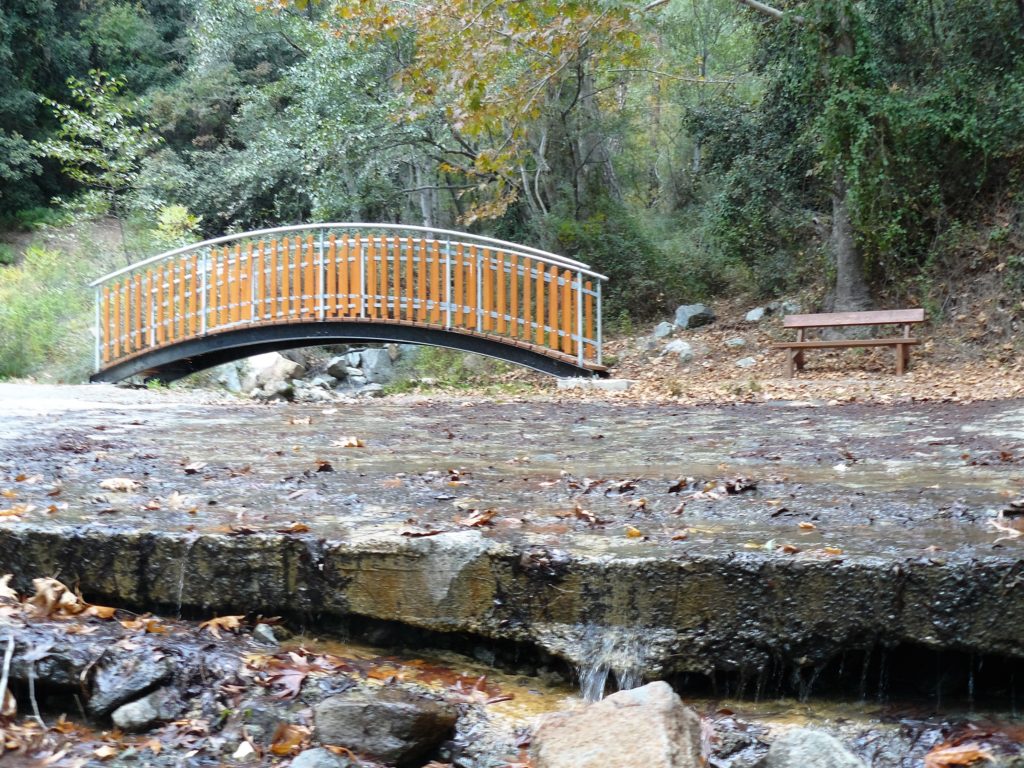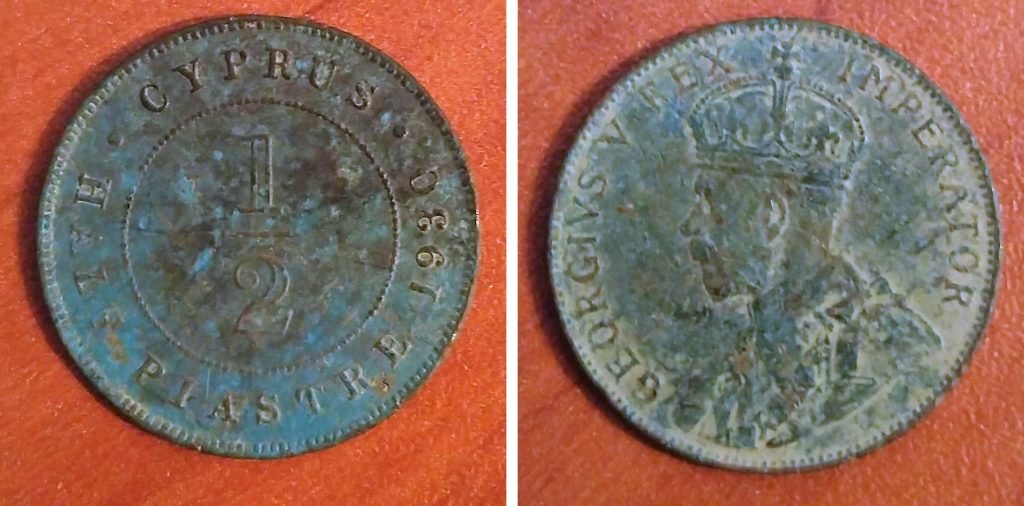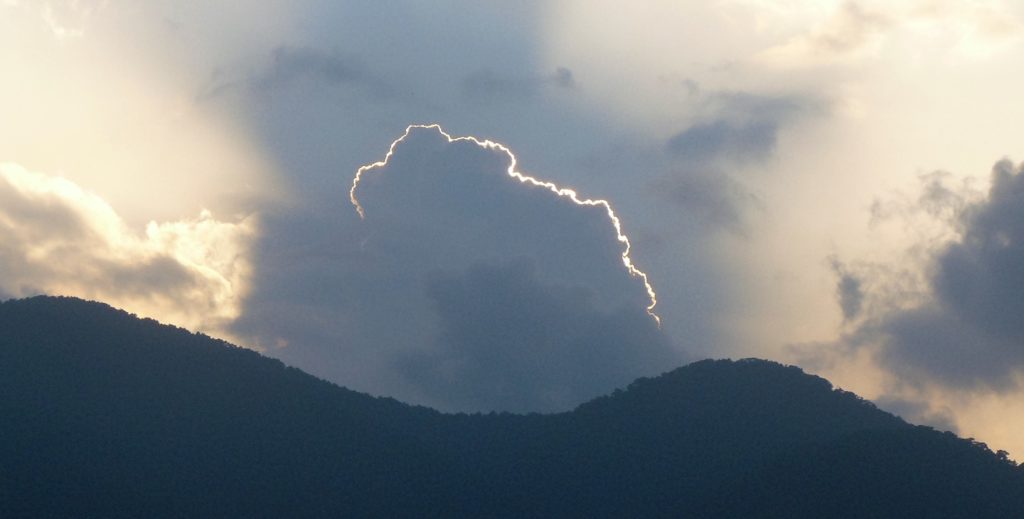Michael Anenburg is a PhD student in the Research School of Earth Sciences of the Australian National University. He is a regular contributor to OnCirculation, the blog of the school. His research focuses on using field observations and experimental petrology to study the PGE (platinum-group elements) in sulfide ore deposits, the REE (rare earth elements) in carbonatites, and the surprising links between the two. Michael is on Twitter as @manenbu.
In late 2011 a group of us began studying towards a M.Sc degree in the Ben-Gurion University of the Negev, Israel, under the supervision of Yaron Katzir. Three of us were working on different aspects of the Troodos Ophiolite in Cyprus. Inevitably, this required fieldwork and an overpriced 40 minute long flight from Tel Aviv in Israel to Larnaca in Cyprus. An ophiolite is a piece of oceanic lithosphere that for some fortunate reason has risen above the waves (“obducted” in sciency speak), allowing us to sample pieces of said oceanic lithosphere without necessitating a submarine. A large part of central Cyprus is one single mountain, Mount Troodos, composed of a marvellous exposure of oceanic lithosphere, from the sediments on top to the mantle rocks below.
There were four of us: myself, Yaron Katzir, and fellow students Hagit Novo and Bar Elisha. A fifth colleague, Meir Abelson from the Geological Survey of Israel, joined us for a few days. My project concerned REE signature recorded in the minerals epidote and allanite, Hagit worked on pyroxenes in dunite channels through peridotite and Bar was studying the isotopic signature of serpentinites.
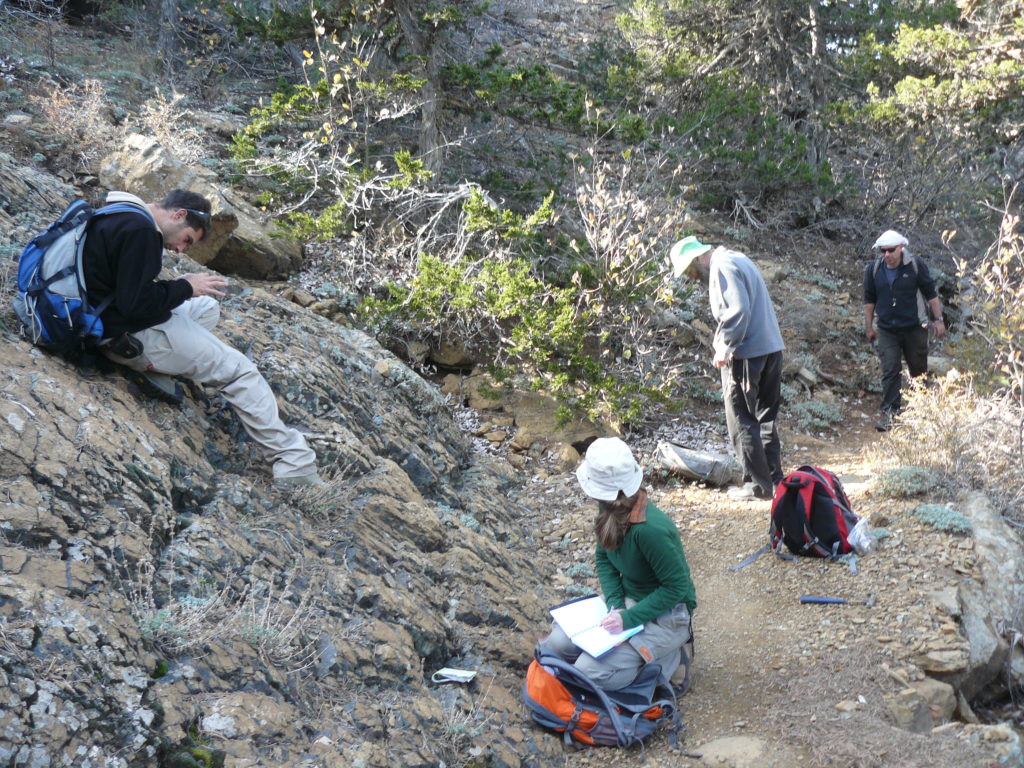
Us looking busy doing all kinds of various geological fieldwork. From left to right: Bar, Hagit, Meir and Yaron.
Troodos is part of UNESCO’s Global Geoparks Network and as such it has well developed hiking trails and even a visitor centre. Many outcrops had signs explaining what you are looking at, thanks to the wonderful work of the Troodos Geopark people. This was extremely useful, because as geologists educated in the limestone infested Israel, our eyes were still not used to looking at oceanic rocks. This served as a crash course in identifying the variety of rocks in the field, as typically altered and weathered in the Cypriot environment.
Once our eyes got used to seeing the oceanic rocks, we discovered amazing things. The geological features and rocks were unlike anything we’ve seen before.
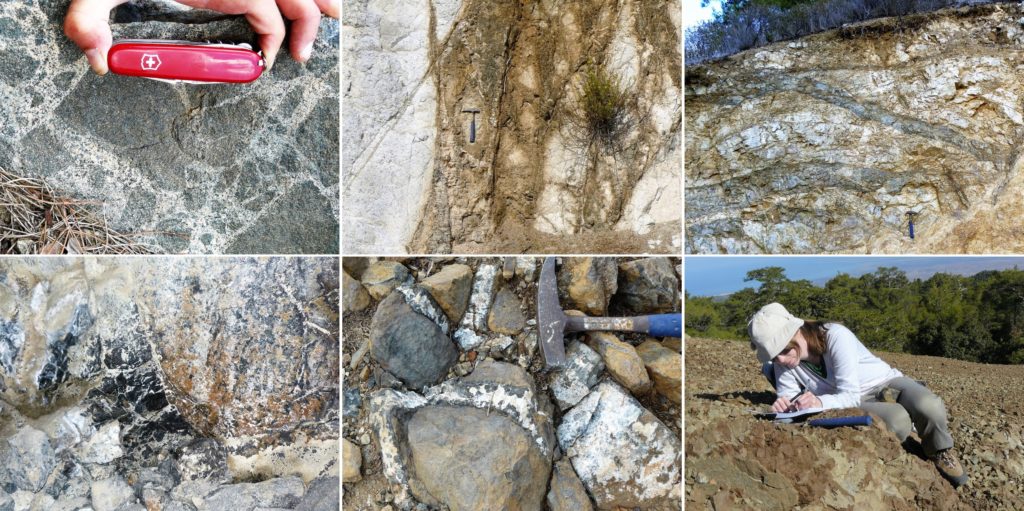
Starting top left, clockwise: plagiogranite magma brecciating a mafic rock; a hydrothermal feeder zone through altered rock; sub-horizontal sheeted dykes; chromitite seam inside an abandoned mine; gabbro pegmatite vein network; Hagit taking notes on a huge pile of olivine: dunite rock.
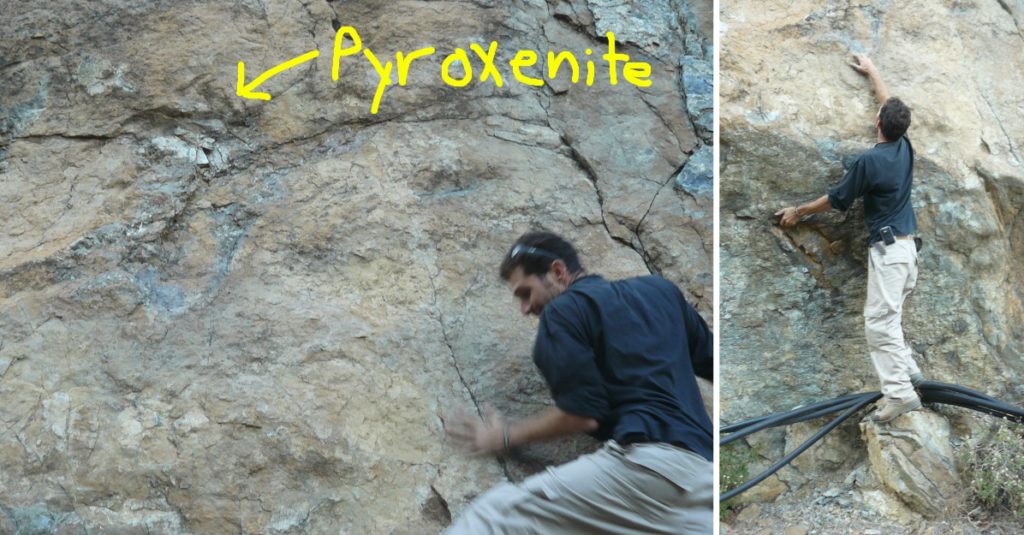
Bar, the tallest of the group, risking his skeletal health while attempting to retrieve an impressive pyroxenite vein.
The geomorphological structure of Troodos of each rock unit concentrically located around one high peak makes it very easy to the “big picture” of the underlying geological structure. All you have to do is to stand one of the countless belvedere spots and you can see just about everything. Lithologies, fault lines and large scale structures. This provided ample opportunities for hilarious geological arguments between Bar and Yaron, a pair notorious for not agreeing on the interpretation of the geology they observe.
Other than the amazing geology which is everywhere in Cyprus, there is no lack of inspiring landscapes. The Mediterranean Sea is easily observable from just about any spot and the Troodos mountain range is dotted with small and picturesque villages.
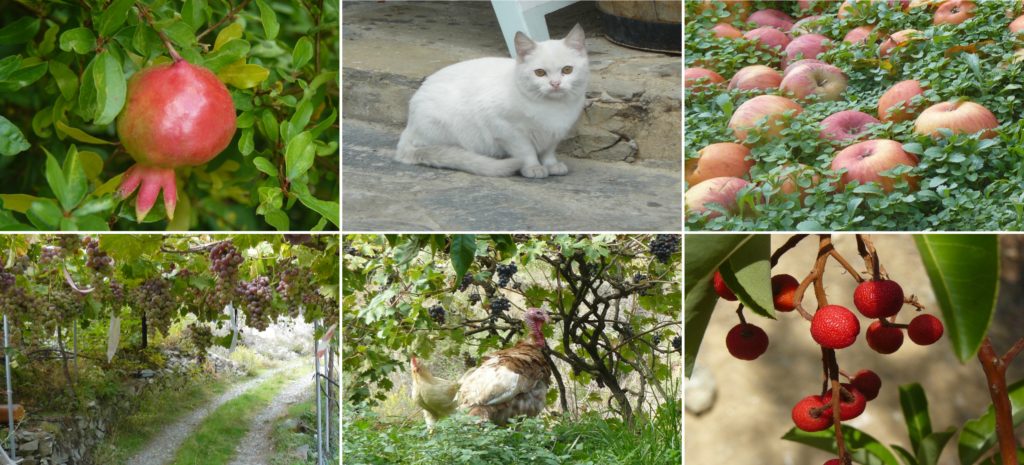
A closer look of the small things you find. The stone wall in the bottom left photograph contains impressive amphiboles, some larger than 10 cm long.
In one of the days, I spotted a small circular object partly buried in the forest floor. After picking it up and cleaning the dirt from it, it turned out to be an 80 year old coin, form the time of the British. Now that was surprising.
As for the science, I studied many of the samples collected in Cyprus. With the help of some colleagues from the Universities of Kiel and Bremen in Germany, we succeeded in showing that the REE were mobile in hydrothermal fluids exsolved from crystallising plagiogranitic magmas. The trace of this hydrothermal activity is recorded in some spectacular samples.
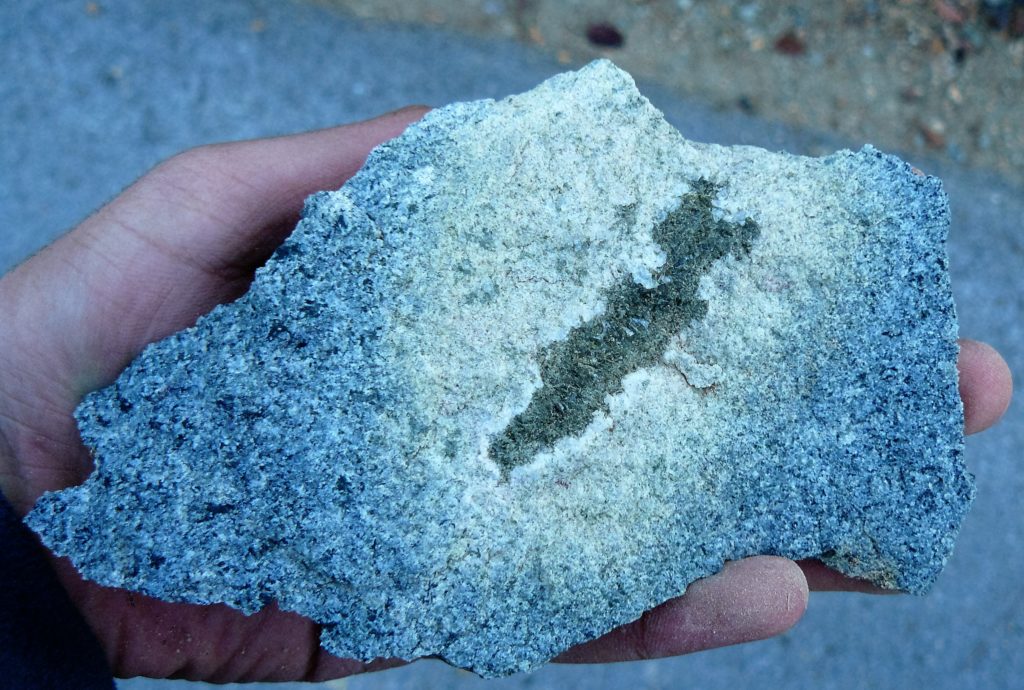
A grey plagiogranite altered to white-green epidosite. The internal cavity is filled by green epidote and allanite, rimmed by a thin selvage of white quartz.
The results of this study were published last year in the following paper: Anenburg M., Katzir Y., Rhede D., Jöns N. and Bach W. (2015) Rare earth element evolution and migration in plagiogranites: a record preserved in epidote and allanite of the Troodos ophiolite. Contributions to Mineralogy and Petrology. 169, 25. doi:10.1007/s00410-015-1114-y
![]() This work is licensed under a Creative Commons Attribution-NonCommercial-ShareAlike 4.0 International License.
This work is licensed under a Creative Commons Attribution-NonCommercial-ShareAlike 4.0 International License.

